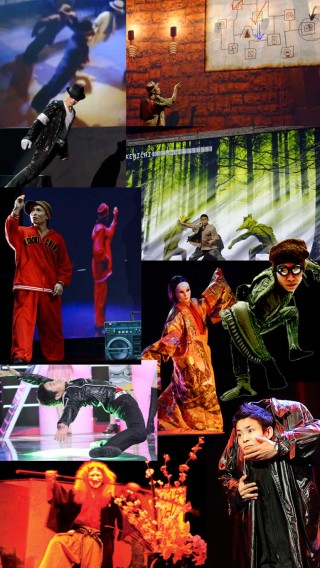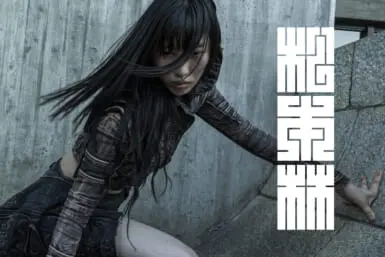Repetitive, exploitative and just a little bit tacky, it is fair to say that TV talent contests are not exactly everyone’s cup of tea. We all know they are often staged and manipulated to promote the act with the most mawkish back story, but these programs still have the power to transfix us.
By Matthew Hernon
Despite all their faults we continue to watch, hoping to see that performance that takes our breath away, like Paul Potts did when he belted out Pavarotti’s classic “Nessun Dorma” on the first season of Britain’s Got Talent.
At last year’s America’s Got Talent it was a Japanese performer named Kenichi Ebina who stole the show. His head-dropping, Matrix-style dance wowed the judges, who were gushing in their praise for the pint-sized star. A clear favorite throughout the series, he became the first foreign dance act to win it, picking up a million dollars in the process—a remarkable achievement for a man who first arrived in the US without any real goals. Wanting to hear more about his rise, Weekender recently caught up with the 40-year-old at a coffee shop in Omotesando.
“I wasn’t interested in dancing as a youngster,” he says. “I wanted to be an astronaut or sports player: something like that. I learned some moves from a friend in high school, but it wasn’t something I thought about pursuing until I moved to the States.”
“While studying at college in Bridgeport, Connecticut, I was invited to a party where they had this kind of dance-off. Everyone got in a circle; then each person had to come up with a dance. I stayed in the background first, just watching, [but] then I was pushed forward. I did just the one step—the MC Hammer style running man and people seemed to love it. I thought they were cheering because it looked cool: I only later realized that it looked cheesy and they were just laughing at me.”
“I’d misunderstood the situation but it had encouraged me to dance. I decided to train myself, taking inspiration from what was around me as well as watching videos to learn new moves. Teaching other students and performing at events around the campus, I became known as the crazy dancing guy. With no career plan mapped out, it felt like a natural progression to continue with it after my studies.”
Ebina earned a living as a dance instructor while supplementing his income by performing at bar mitzvahs. He also formed the group BiTriP who went on to become Grand Champions of the Amateur Night at the Apollo. The Grand Stage, which has helped launch the careers of singers like Stevie Wonder and Ella Fitzgerald, proved to be an extremely rewarding venue for the Tokyo-born performer, who returned there a few years later as a solo artist to once again claim the Grand Champion title at the Showtime at the Apollo contest.
Now a man in demand, he started performing at major events such as the Cirque du Soleil, Neil Young’s Green Dale tour, the Australian Open, the Monaco Grand Prix and the TED Conference. He also appeared on numerous TV programs such as Maury, Jimmy Fallon and the cartoon Angelina Ballerina, as well becoming a regular fixture at the BOX NYC, a risqué Moulin-Rouge style burlesque club in Manhattan, New York. His routine proved extremely popular among the rich and famous that regularly frequented the club, with Simon Cowell and Madonna both booking him for private parties.
“People were always talking about the big names that would drop by, but apart from the megastars like Janet Jackson and Snoop Dogg, I was usually oblivious,” he says, “One night I was doing my robot routine and as part of the act I pick a member of the audience to revive my battery by pretending to blow on my crotch. After the show someone told me it was Kate Moss that I grabbed: I didn’t have a clue who she was!”
“I’m really not good at identifying celebrities. Several years ago (at a TED Conference), Meg Ryan and Cameron Diaz both came up and complimented me on my dancing, but until they said their names I just assumed they were ordinary members of the public.”
Since winning the popular reality show, Ebina has gone on to become a star in his own right and is now one of the most well-known dancers in America. He had actually been invited on the show a few years earlier, but couldn’t take part as he didn’t have a green card. Once that issue had been sorted he decided to give it another try and quickly emerged as a leading contender following his standout audition.
As the series progressed, his choreographed set became more elaborate: in the Top 60, or Live Show round, he used a video backdrop to create multiple versions of himself on a screen to create what looked like a video game. The judges—particularly Howie Mandel, who described him as the “best act in the world”—all seemed to fancy his chances of winning. The man himself, however, was not sure whether that was what he wanted.
“I went on the show to get myself out there, like a promotional tool,” he tells us. “I never expected or hoped to win. Getting towards the latter stages, I started thinking it would be great to finish as a runner-up, as you get all the praise and recognition without the problems.”
“I knew that if I finished first there would be negative feedback and racist comments, but while that has been the case, there have also been a lot of positives. The million dollars was of course nice and it has certainly helped boost my profile. Overall, despite my early reservations, I can now say I’m delighted to have won it even if my performance in the final wasn’t great. I actually agreed with [program judge] Mel B’s criticism!”
Fortunately the American viewers didn’t. Aside from a few dissenters on social networking sites (including such gems as “How could a man from Japan win it? Has everyone forgotten Pearl Harbor?”) Ebina has received mostly supportive messages since his victory. If you’ve never seen him perform, he is definitely worth checking out on YouTube. And plenty of people have: the video of his original audition currently has more than 31 million views.










